The Australian Bureau of Statistics (ABS) released quarterly data on dwelling commencements and completions, which badly missed the Albanese government’s housing targets.
Only 41,900 dwellings commenced construction in Q4 2024, 18,100 (30%) fewer than Labor’s target, which requires 60,000 homes to be built every quarter.
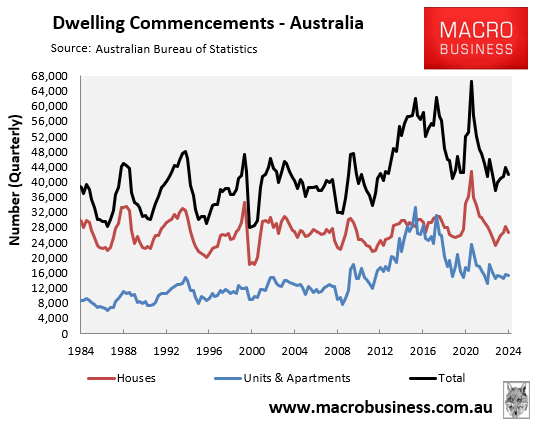
Only 168,050 dwellings commenced construction during the year to Q4 2024, 71,950 (30%) below the annual run rate of 240,000 required to meet Labor’s housing target.

It is a similar story for dwelling completions, which also badly undershot Labor’s targets.
Only 45,167 dwellings commenced construction in Q4 2024, 14,833 (25%) fewer than Labor’s target of 60,000 homes per quarter.
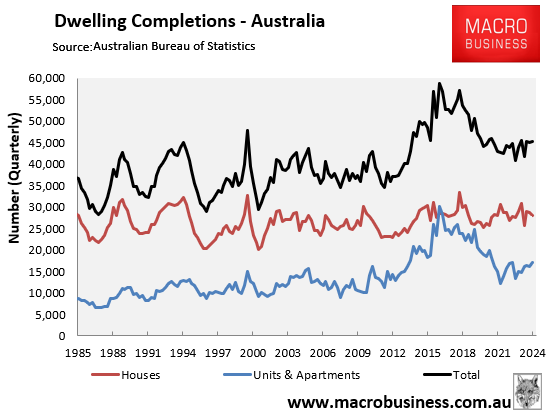
Annual dwelling completions were better at 172,200. However, they were still 67,800 (28%) below the annual run rate of 240,000 required to meet Labor’s housing target.
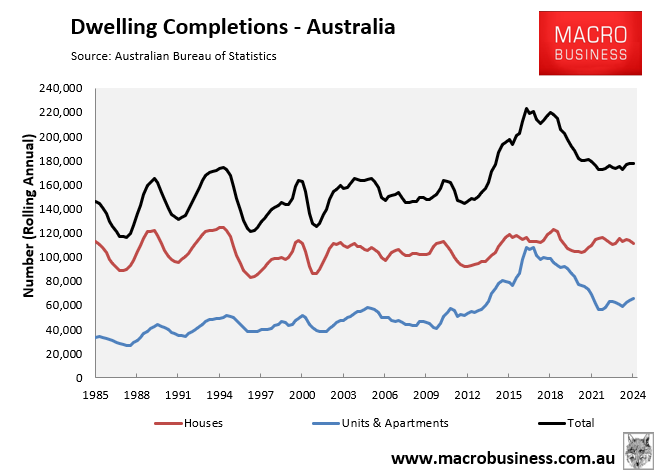
The following chart plots annual dwelling completions against Labor’s 240,000 housing target:

As you can see, Australia’s run rate is way below target. In fact, never in history has Australia gotten close to meeting the target.
The next chart plots the various measures of dwelling construction—approvals, commencements, and completions—versus population growth:
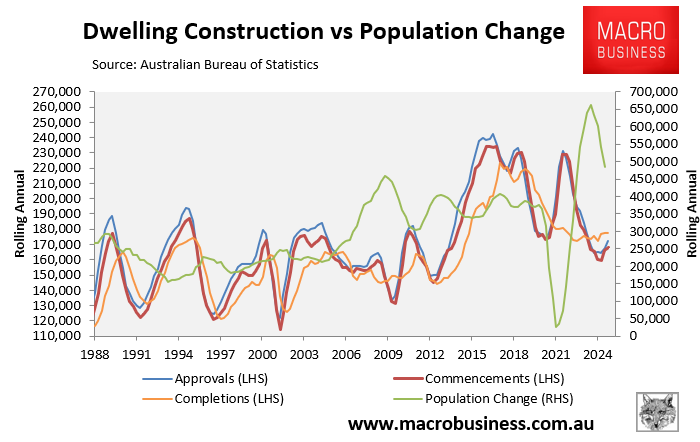
As you can see, dwelling construction has slumped at the same time as population growth boomed.
As illustrated below by Justin Fabo from Antipodean Macro, new detached home sales have also stalled, falling by 0.6% in February, showing little movement in two and a half years, and remaining at historical lows.
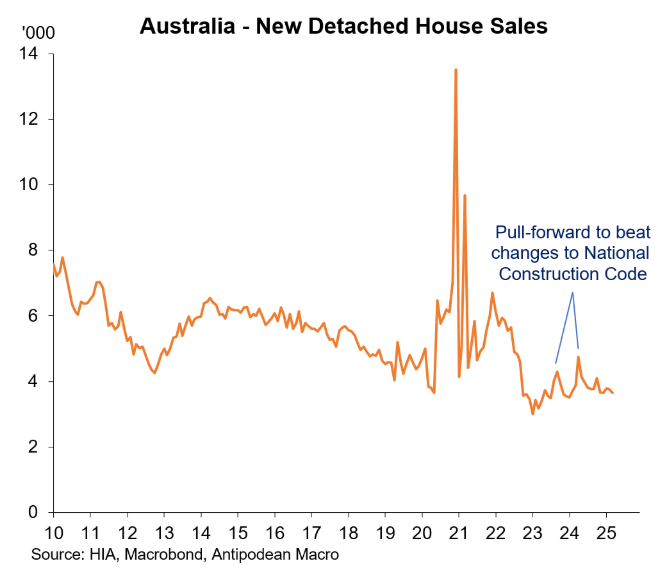
The immediate outlook is poor, given that net overseas migration appears to have accelerated in the first two months of 2025.
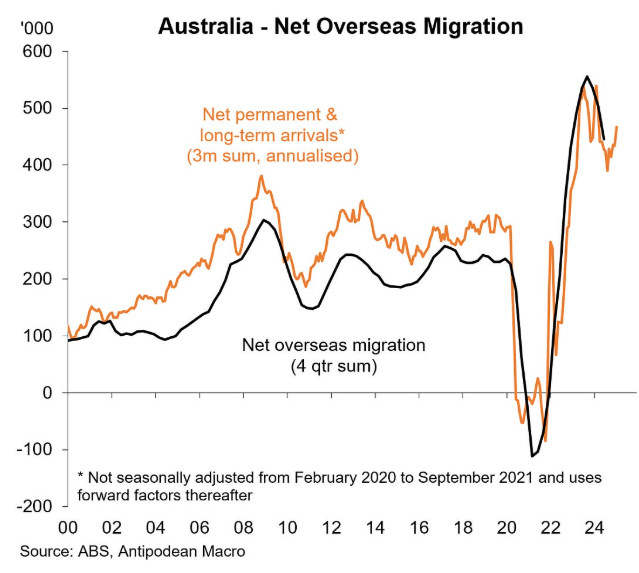
In fact, 155,000 net permanent and long-term arrivals landed in Australia in January and February 2025, the second highest number on record and only a smidgen below last year’s record of 161,000 for the same period.
As a result, CoreLogic and PropTrack reported accelerating rental growth in Q1 2025.
Australian housing will remain in shortage so long as population demand via immigration continues to exceed supply.

